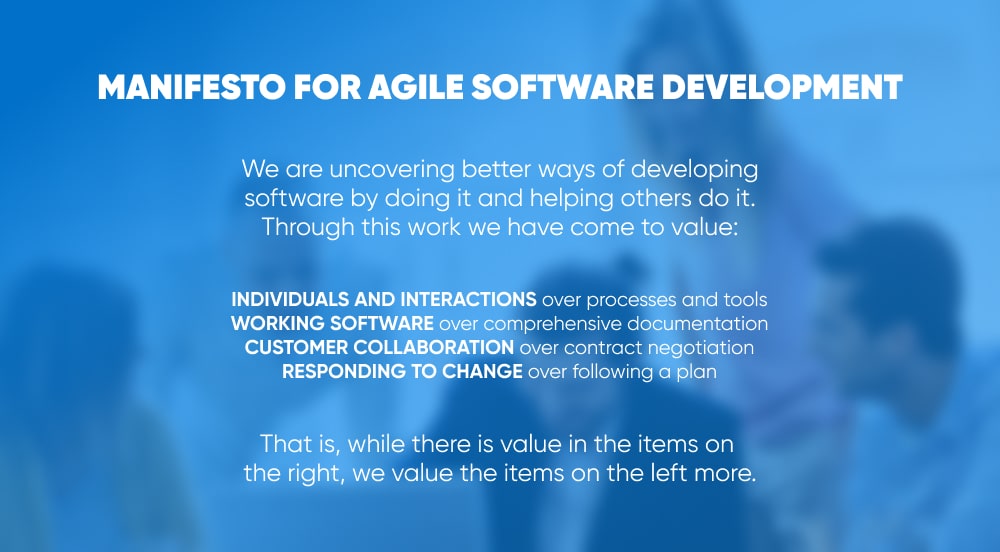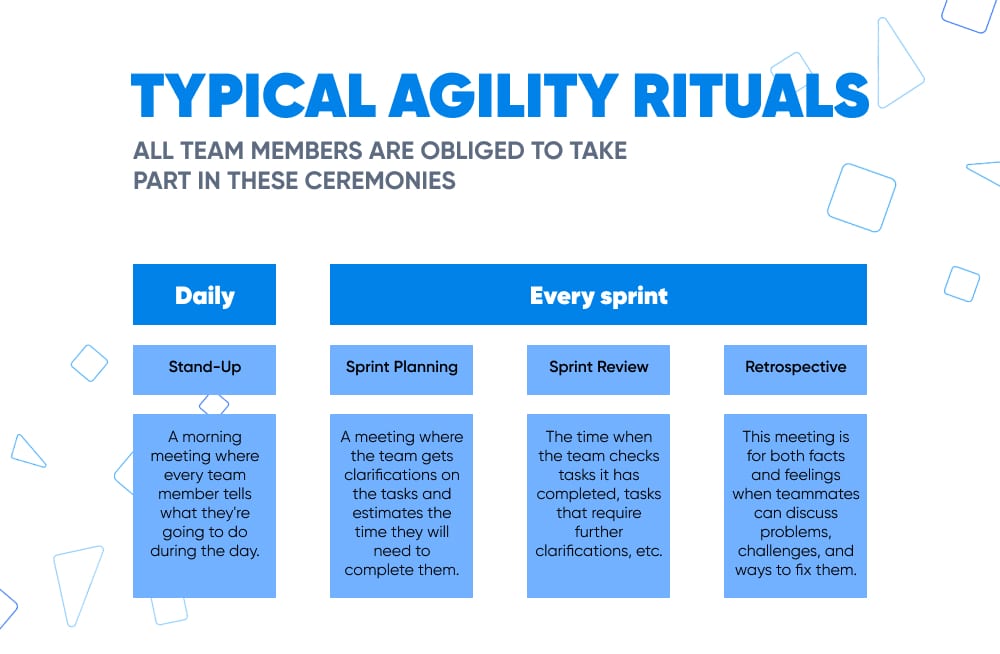
There are two principal approaches to developing software with the assistance of third parties – fixed-bid outsourcing and agile partnership with outstaffing companies. Two of them have their pros and cons, and both of them are not one-size-fits-all solutions. In this article, we tried to figure out what kind of cooperation would be more beneficial for your particular case – traditional IT outsourcing or acquiring digital services with distributed teams.
Choosing between agile partnership and customer/vendor relations
Outsourcing software development to IT companies with fixed bids for many years has been the main business model of cooperation between non-technical clients and their IT vendors. However, due to the digital transformation of almost all industries, most companies today have in-house tech teams of their own, working on their product apps and other software.
The best way to define what kind of cooperation will suit your particular case is by looking at some examples.
| When to choose fixed-bid outsourcing? | When to choose a distributed team? |
|---|---|
| 1. If you have a detailed project roadmap and know precisely what you want to get as a final product. | 1. If you don’t yet have a final vision of a deployed project. |
| 2. If you don’t have in-house technical specialists who might benefit from tight cooperation with outsourced experts. | 2. When you have an in-house team of developers who might win from cooperation with a skilled distributed team. |
| 3. If you want to minimize your participation in the technical part of the project. | 3. If you want to keep the development process under control and manage the efficiency of your remote team. |
| 4. If you’re sure there will be no need to amend a technical task in the development process. | 4. When you’re not sure yet where the development process and marketing analysis will lead your project. |
| 5. If you can afford to pay a large sum of money, as fixed-bid outsourcing is one of the most expensive ways to receive digital services. | 5. If you have a limited budget for external assistance with digital transformation. |
| 6. If you need a one-time cooperation and there will be no necessity to maintain the project once it is released. | 6. If apart from deployment, your project requires constant maintenance and further development. |
Another great difference between these two business strategies is the type of cooperation they lead to. While fixed-bid outsourcing creates customer-vendor relations, where the customer gets a particular service for a previously indicated price, working with distributed teams allows you to create a strategic partnership.
What does the strategic partnership mean for a technology company cooperating with an IT vendor?
When you opt for an outstaffing company that reinforces your in-house team with their tech talents instead of outsourcing your project to an IT vendor with fixed bids, you get the following benefits:
- Mutual trust and support for open collaboration on agile projects.
- Innovation applied where they are most wanted – to your business priorities.
- A focus on your success at every moment of your cooperation.
Let’s see why else an agile partnership might be more beneficial for your project than buyer-seller relations.
Eight advantages of agile software development
On the one hand, not every case of outstaffing is meant to be agile. On the other hand, the commitment to agile promotes to have distributed teams. Here is a quick reminder of what agile software development is, formulated by the founders of this approach:

Image source: AgileManifesto.org
So, how might your business and your project benefit from agile development with distributed teams?
1. You can adapt quickly to technological changes.
Thanks to a speedy reaction to the evolving needs of the market or innovative approaches to software development, you can be the first to apply brand-new technologies and take the lead in your niche. The agility of software development paves the way to continual innovation.
2. You can learn quickly from testing on clients.
When you work in iterations, constantly offering your users new releases of your app, you can get their feedback fast enough to place new tasks for the required functionality or bug fixing into the upcoming sprint.
The agile approach to the digital transformation of your business also means that you give your customers more tools to get engaged with your app. More communication and engagement instruments lead to faster and more detailed feedback on your project.
3. Agility rituals contribute to the higher effectiveness of all individuals and all processes.
Retrospectives, in particular, help you understand your team’s issues and how each team member sees the way out of challenging situations. Agility meetings help you hear everyone and look at the problematic task from different angles.
Daily stand-ups allow the managers to see every team member’s capacity and check each developer’s progress. At the same time, regular check-ups make the company community more engaged in the project’s whereabouts, as everyone from junior engineers to CEOs and CTOs can track the project’s progress and feel like a part of a big process.
4. Your company can get an external perspective on its processes.
Most leaders overestimate their agility, and in this situation, IT vendors with well-established practices of agile in distributed teams will emphasize elements of your working process that can be optimized.
What is more, you can use the best practices of your IT partner. Developers and other tech talents that will be fully involved in your project will work closely and share their unique knowledge with your in-house team.
5. Agile methods facilitate quick iterations of the development processes.
By replacing a typical software development lifecycle (plan → design → develop → test → deploy) with the PDCA method (plan → do → check → act), you decrease the longevity of the working process and help your team react to any external changes almost immediately.
For example, you can get hotfixes in a matter of days, not months. As a result of the changes in the workflow, your team can fix bugs much faster after their detection.
6. Agile distributed teams help their partners work faster.
The point is not only in the additional workforce you receive; it’s about getting more efficient tools and knowledge of technologies that might automatize some of your most time-consuming processes.
7. No one knows upfront the exact needs for a good app.
This means you can’t give exact estimations on what features and functions your future app might need, what technologies you will have to use, or how much time the development would take you. All these conditions make a partnership with a distributed team much more beneficial than outsourcing a ready-to-use app from an IT vendor.
8. Agile distributed teams provide strategic value for their customers.
Partnership with a reliable IT vendor is not only about getting things done on time and increasing the speed of your project development. It also gives your company a strategic advantage over competitors thanks to the innovation it boosts and the workflow it optimizes.
Moreover, as one of the core principles of agile is that the business value comes first, you can rest assured that every new task or project will start with answering the “Why we are doing this?” question, which means that your business goals will always be a top priority for the development team.
How to make the digital transformation of your business more agile?
There are a few steps that will allow your business to benefit from the agile approach to digital transformation faster and in a wider range.
- First, you must “reprogram” your approach to the business. Find a new vision and deal with the fact that the changes might be hard for a part of your team. Sometimes new growth opportunities are not about new features or technologies, they’re about changing the direction of your business/project/development entirely.
- Then, you need to become more client-oriented. Pay attention to customers’ engagement in testing and gathering feedback about your project. Focus on perfect users’ experience and interface, not CRM.
- Finally, stay results-oriented and goals-oriented. Focus on the business value and your business goals by providing a fast reaction to any changes that might happen. Also, don’t ignore tools that can help you remain agile and speedy, like APIs and integration frameworks.
Agile software development with distributed teams
After years of the pandemic, we can state that remote work with employees living all over the world is not only possible, but it is also efficient and productive. However, we can’t ignore some difficulties businesses can have with distributed teams. One of the core principles of agile software development (working software comes first) is juxtaposed to the common sense of working with remote teams, namely that documentation has to be thorough, always up-to-date, and comprehensive.
The experience of remote work during the Covid pandemic demonstrated that coherent documentation is an absolute must when you don’t have the possibility to directly communicate with your teammates at every minute of the working day. The situation gets worse when we take into consideration the difference in time zones of your distributed team members.
These are not all challenges with distributed teams working agile. Placing individuals and interactions in the first place and pushing tools and processes lower on the list can also be harder for remote teams living in different countries. You must pay additional attention to engaging distributed team members in all your meetings and work interactions.

How to define the success of agility adoption?
The factors demonstrating the success of the agile digital transformation of your business are the same as you would apply when evaluating the effect of any other business practice. You measure sales uplifts, customer satisfaction, quality, and speed. These are the only key indicators that can show you the progress in numbers, while other results of adopting an agile approach to development are non-material, like feelings, emotions, the comfort of team members, subjective perception of the working process, etc.
Summing up
In particular cases, strategic partnership with distributed teams working on your digital transformation is more beneficial than outsourcing digital services to IT vendors. Namely, your partner will focus on your business needs and success, not the paycheck.
At the same time, working with distributed teams makes your digital transformation more agile, which brings multiple benefits to your project. Apart from tangible results like sales uplifts, you also get a more loyal, more engaged team that is more comfortable with each other and your project.
You can hire a distributed team of tech talents to work on your digital transformation by contacting MWDN managers. We have more than 20 years of experience in software development and digital transformation and will gladly reinforce your in-house team with our top specialists.
Content
- 1 Choosing between agile partnership and customer/vendor relations
- 2 Eight advantages of agile software development
- 2.1 1. You can adapt quickly to technological changes.
- 2.2 2. You can learn quickly from testing on clients.
- 2.3 3. Agility rituals contribute to the higher effectiveness of all individuals and all processes.
- 2.4 4. Your company can get an external perspective on its processes.
- 2.5 5. Agile methods facilitate quick iterations of the development processes.
- 2.6 6. Agile distributed teams help their partners work faster.
- 2.7 7. No one knows upfront the exact needs for a good app.
- 2.8 8. Agile distributed teams provide strategic value for their customers.
- 3 How to make the digital transformation of your business more agile?
- 4 How to define the success of agility adoption?
- 5 Summing up
